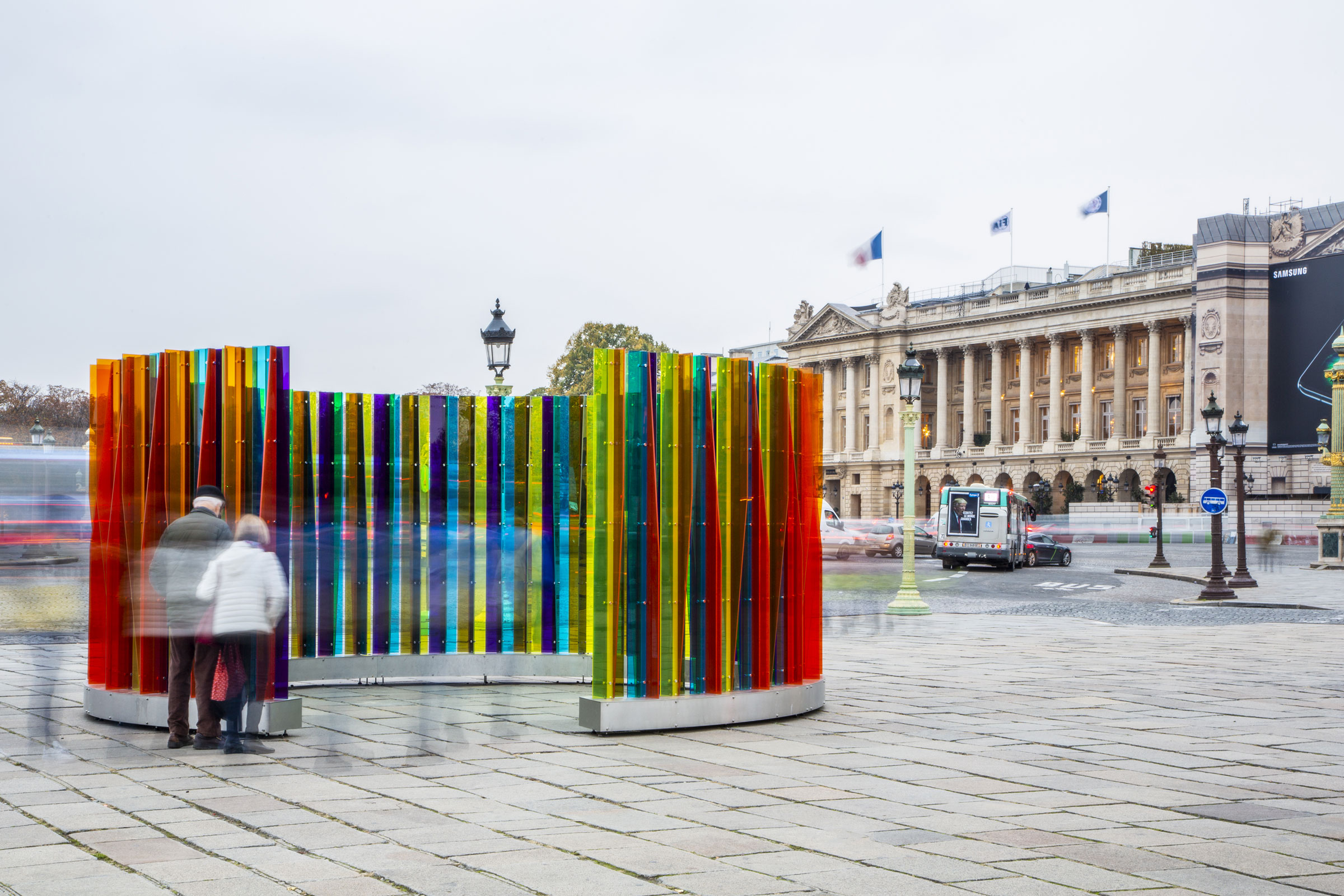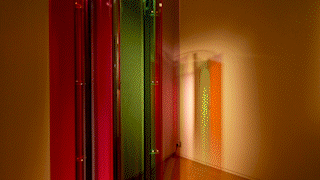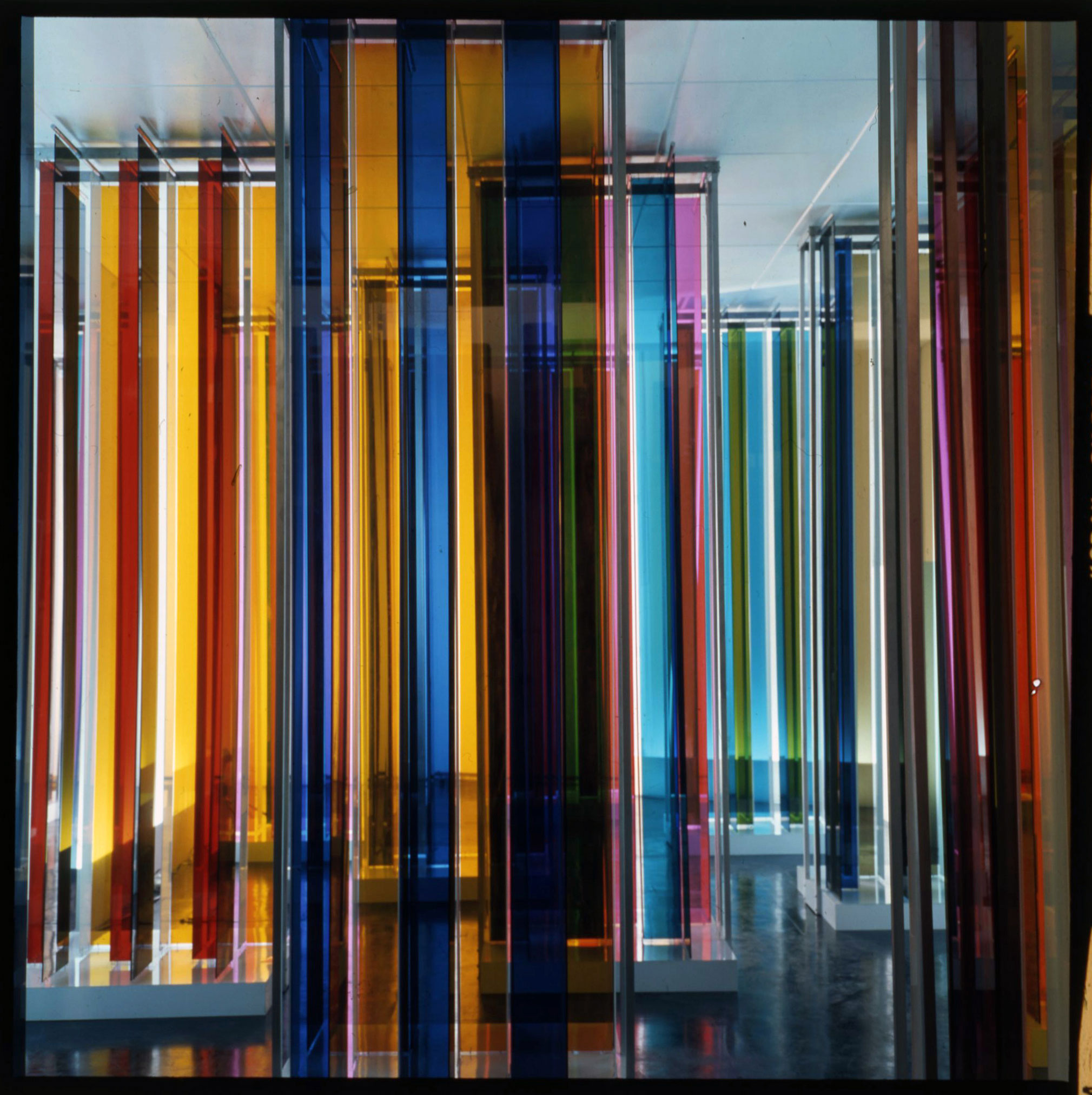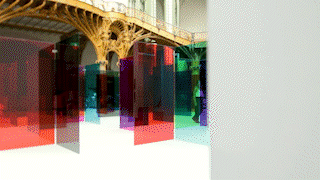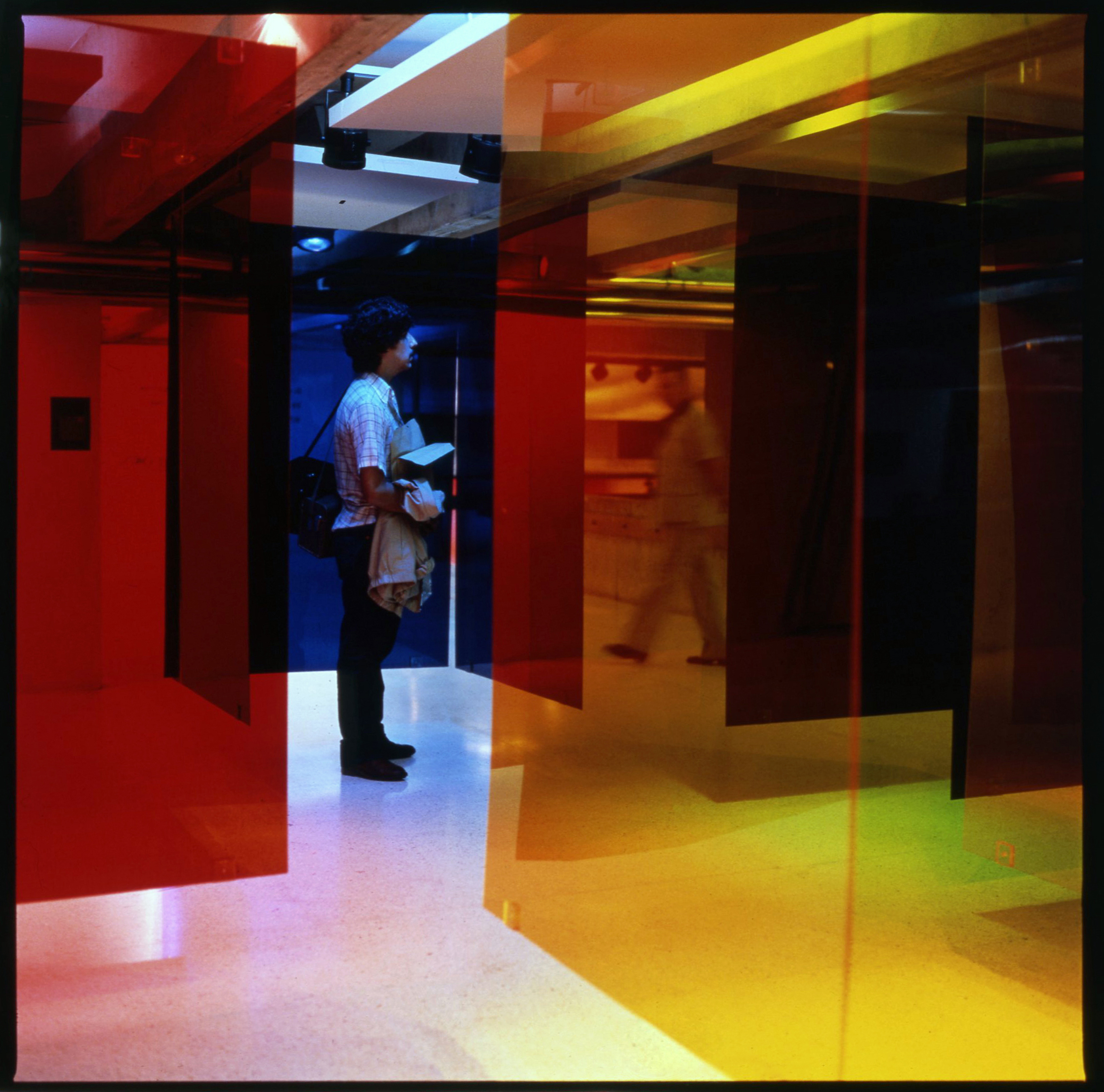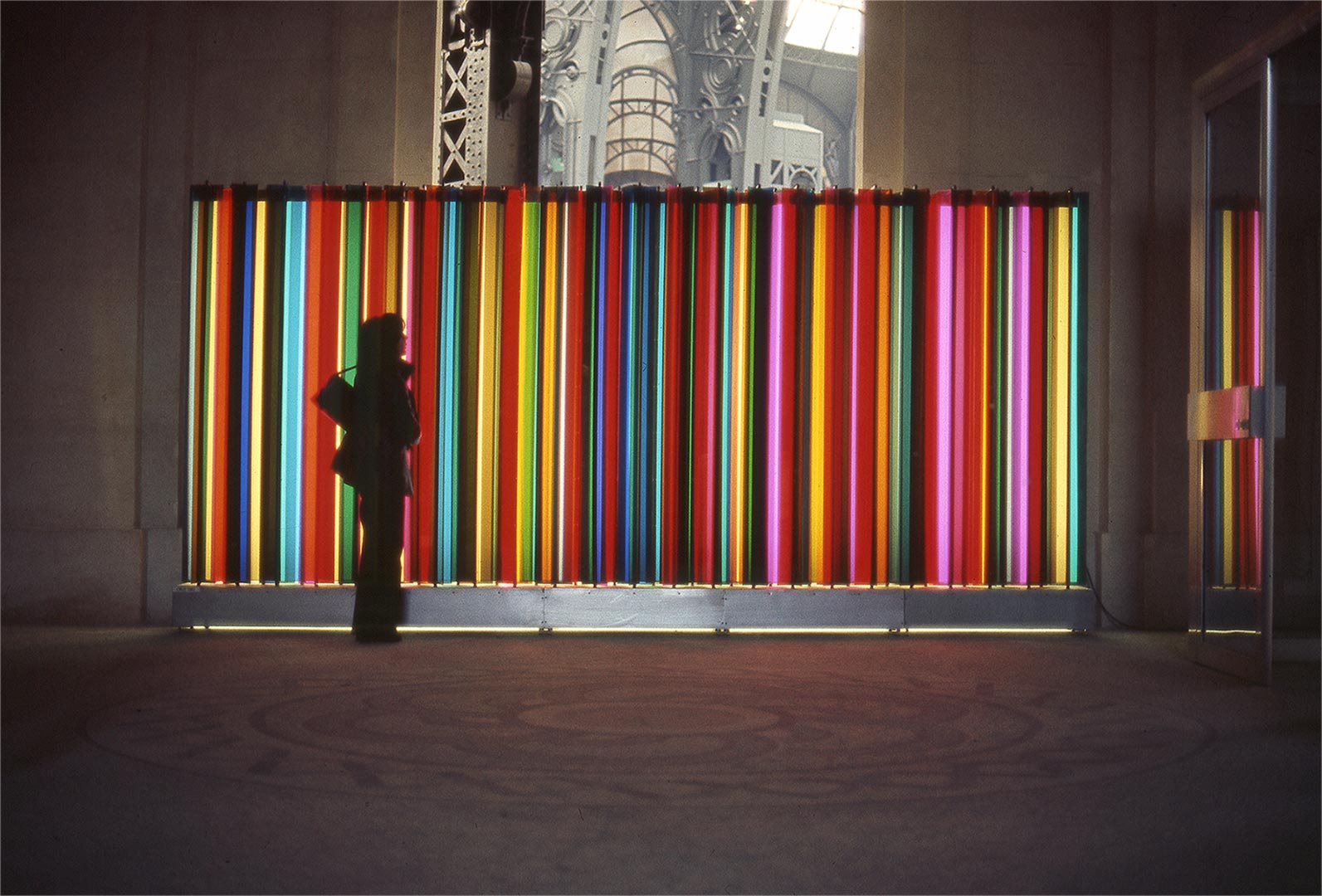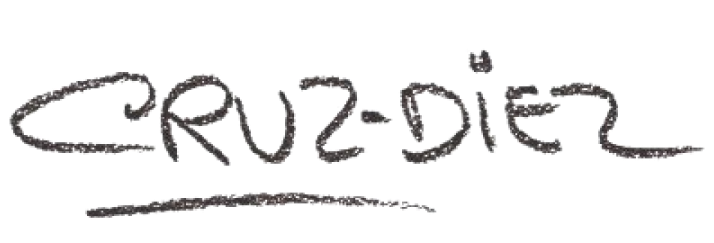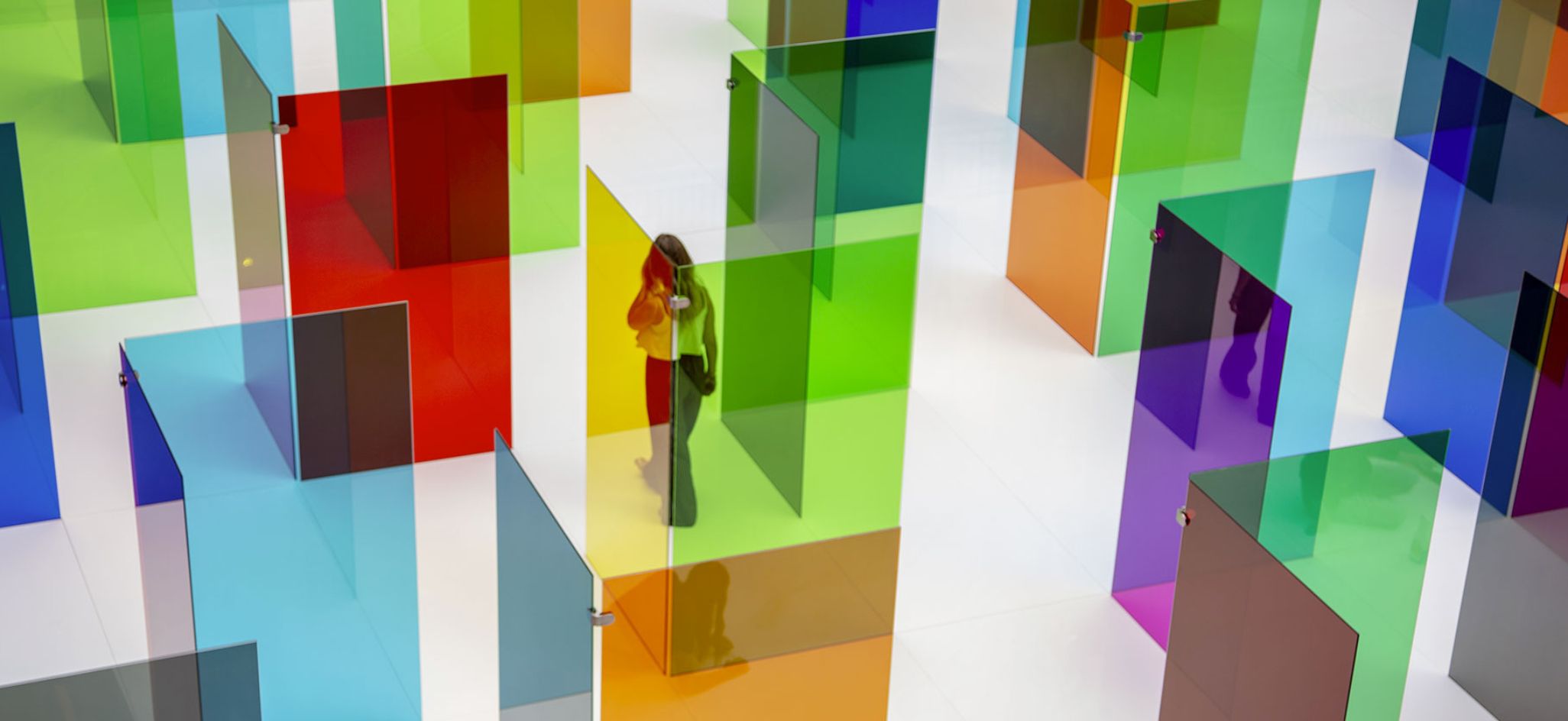
The Transchromie (1965) focuses on how color is affected by subtraction. When superimposing a structure consisting of colored transparent strips placed at varying distances and in a specific order, subtractive combinations are achieved that change according to the displacement of the viewer, the intensity of the light, and the surrounding colors.
Because of their transparency, the strips of color allow us to observe the surrounding environment, as it is modified by the phenomenon of subtraction. The reading of the colored transparent support, with its reflected or translucent images, stimulates visual access to ambiguous spaces.
The spectator is the one who, through his wandering, chooses among the angles of view the combination of subtractions he desires. The work exists less in itself than as a dialogue with the surrounding reality, captured by transparency.
Jean Clay – Carlos Cruz-Diez et les trois étapes de la couleur moderne, Jean Clay, 1969
